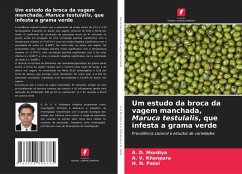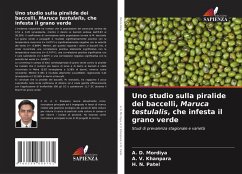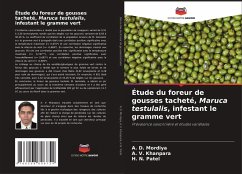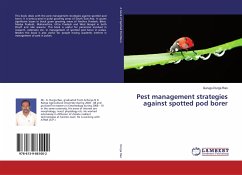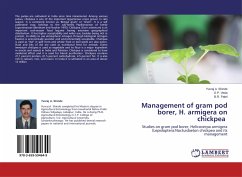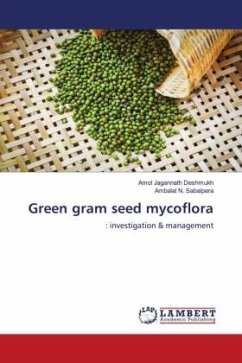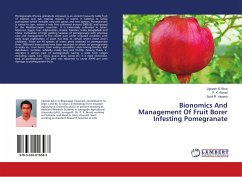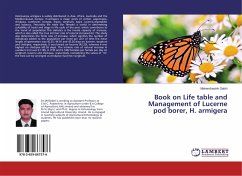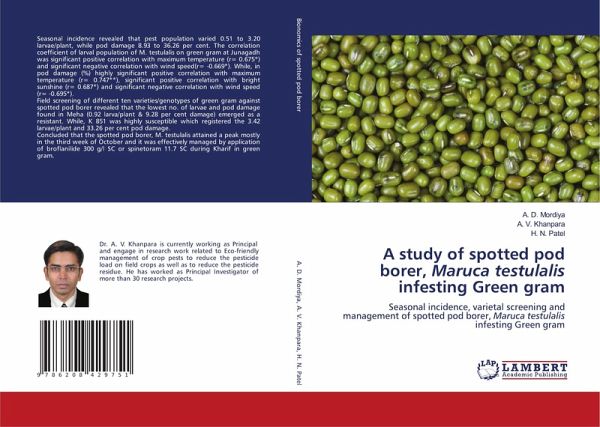
A study of spotted pod borer, Maruca testulalis infesting Green gram
Seasonal incidence, varietal screening and management of spotted pod borer, Maruca testulalis infesting Green gram
Versandkostenfrei!
Versandfertig in 6-10 Tagen
53,99 €
inkl. MwSt.

PAYBACK Punkte
27 °P sammeln!
Seasonal incidence revealed that pest population varied 0.51 to 3.20 larvae/plant, while pod damage 8.93 to 36.26 per cent. The correlation coefficient of larval population of M. testulalis on green gram at Junagadh was significant positive correlation with maximum temperature (r= 0.675_) and significant negative correlation with wind speed(r= -0.669_). While, in pod damage (%) highly significant positive correlation with maximum temperature (r= 0.747__), significant positive correlation with bright sunshine (r= 0.687_) and significant negative correlation with wind speed (r= -0.695_).Field sc...
Seasonal incidence revealed that pest population varied 0.51 to 3.20 larvae/plant, while pod damage 8.93 to 36.26 per cent. The correlation coefficient of larval population of M. testulalis on green gram at Junagadh was significant positive correlation with maximum temperature (r= 0.675_) and significant negative correlation with wind speed(r= -0.669_). While, in pod damage (%) highly significant positive correlation with maximum temperature (r= 0.747__), significant positive correlation with bright sunshine (r= 0.687_) and significant negative correlation with wind speed (r= -0.695_).Field screening of different ten varieties/genotypes of green gram against spotted pod borer revealed that the lowest no. of larvae and pod damage found in Meha (0.92 larva/plant & 9.28 per cent damage) emerged as a resistant. While, K 851 was highly susceptible which registered the 3.42 larvae/plant and 33.26 per cent pod damage.Concluded that the spotted pod borer, M. testulalis attained a peak mostly in the third week of October and it was effectively managed by application of broflanilide 300 g/l SC or spinetoram 11.7 SC during Kharif in green gram.







